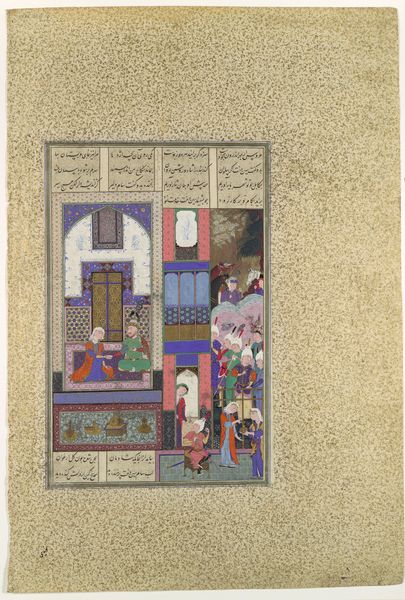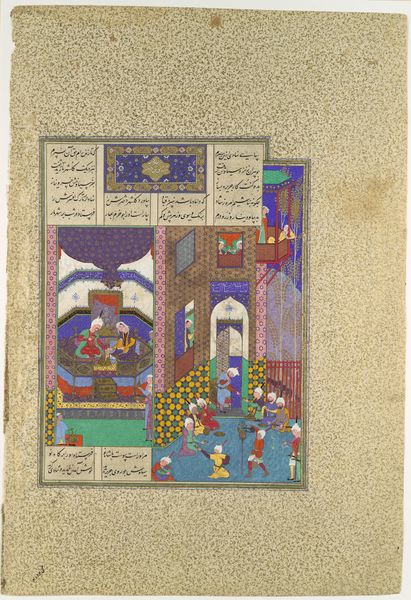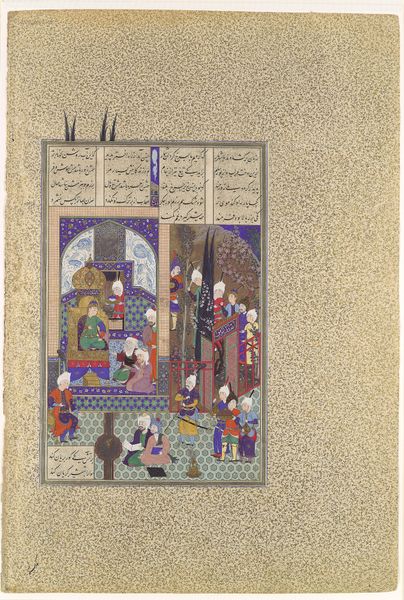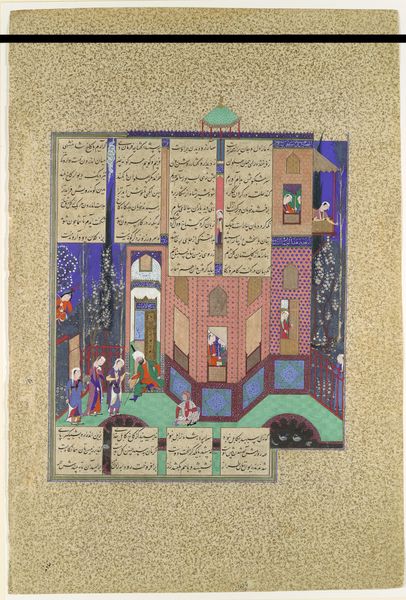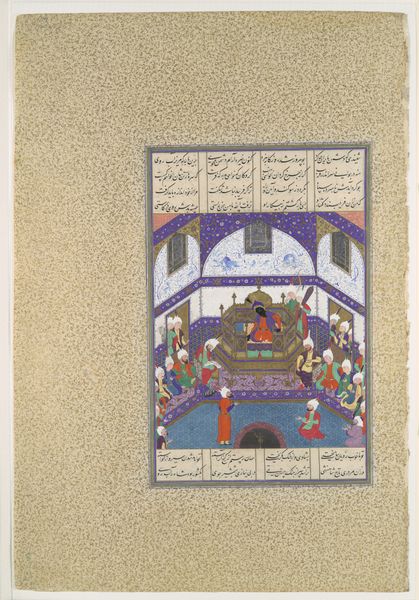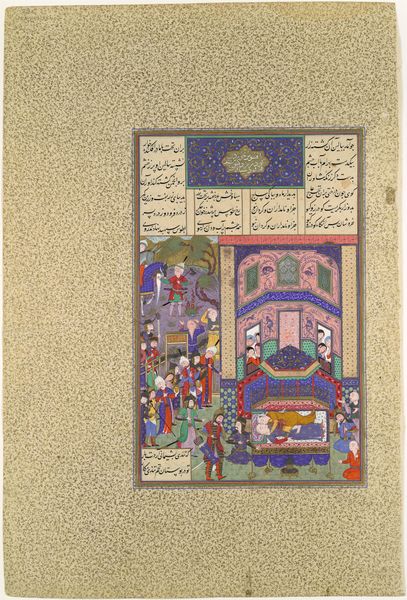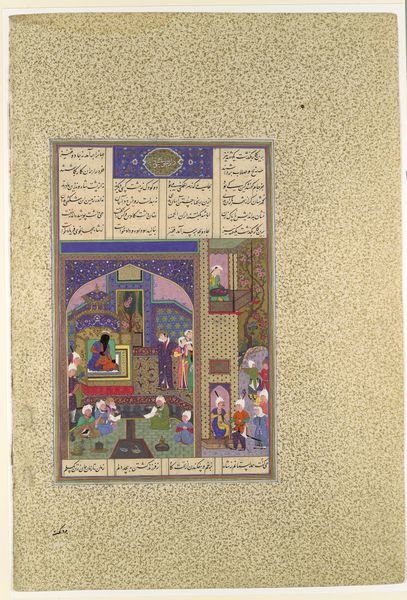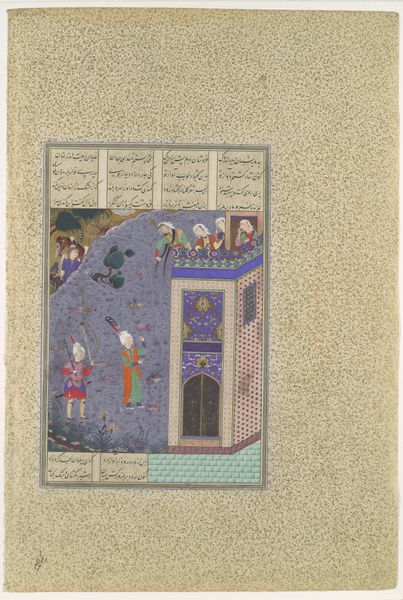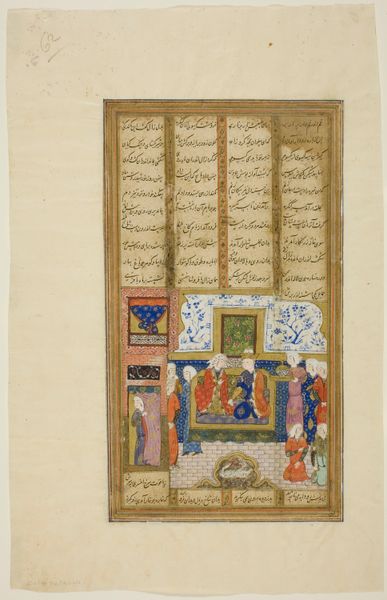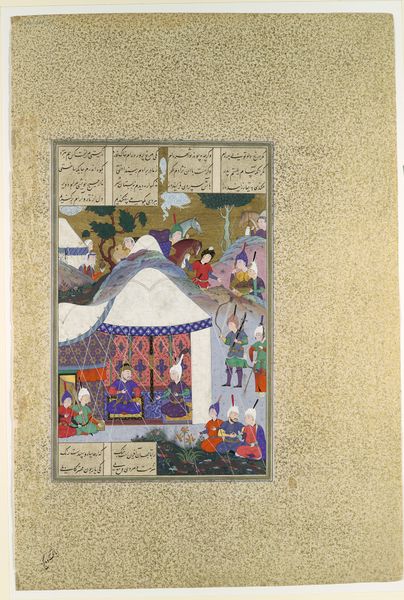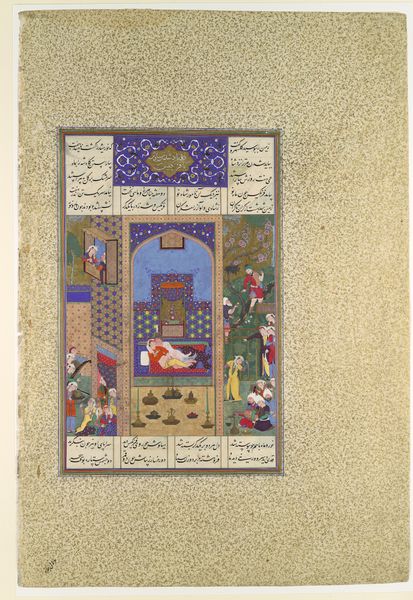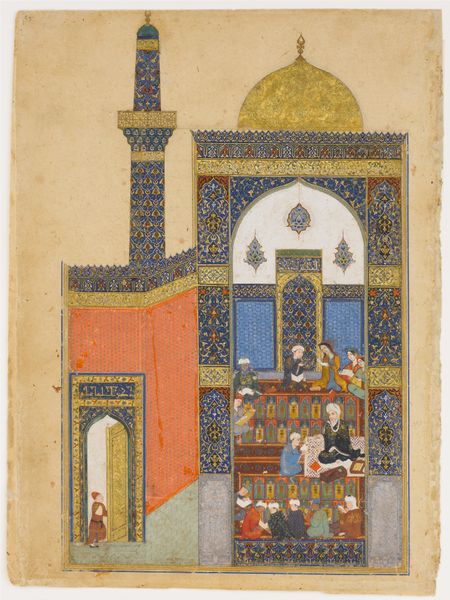
"Mihrab Vents His Anger Upon Sindukht", Folio 83v from the Shahnama (Book of Kings) of Shah Tahmasp 1500 - 1555
0:00
0:00
tempera, painting
#
water colours
#
narrative-art
#
tempera
#
painting
#
figuration
#
coloured pencil
#
horse
#
men
#
islamic-art
#
miniature
Dimensions: Painting: H. 10 15/16 in. (27.8 cm) W. 7 1/8 in. (18.1 cm) Page: H. 18 1/2 in. (47 cm) W. 12 7/16 in. (31.6 cm) Mat: H. 22 in. (55.9 cm) W. 16 in. (40.6 cm)
Copyright: Public Domain
Editor: Here we have "Mihrab Vents His Anger Upon Sindukht," a painting attributed to Abu'l Qasim Firdausi, dating from 1500 to 1555. It's crafted using tempera and watercolours. The density of figures is quite striking, particularly given the scale of the miniature. How would you interpret this density in relation to its cultural significance? Curator: The density, in this case, can be tied directly to the social function this particular page from the Shahnama would have served. The Shahnameh wasn't just a beautiful object; it was a tool for legitimizing power. This painting’s detail conveyed the opulence and sophistication of the court that commissioned it. Editor: So it was a kind of… visual propaganda? Curator: In a sense, yes. Consider the lavish use of colour and the minute details in the figures’ clothing. These details would be lost except to those who had the privilege of getting very close to the page. What effect would that restriction of viewership create? Editor: Exclusivity. It’s almost a performance of wealth and status that very few could witness intimately. How did that context affect the artist's role? Curator: The artist, though immensely skilled, operated within the patronage system. Their creativity served a larger purpose: to glorify the ruler and his lineage through depictions of legendary tales and heroic figures. Even the act of illustrating this manuscript—a laborious, expensive process—underscored the patron's authority and taste. In doing so, they helped shape the Shah’s perception of the world, and its perception of the Shah. Editor: It’s fascinating how the painting functioned not just as art, but as a political tool, especially for those who had the privilege to interact closely with it. I hadn’t thought about that degree of intentionality. Curator: Precisely! It challenges our modern conceptions of art’s role and the artist’s agency. Always consider who the art was *for*, and what they were meant to *do* with it.
Comments
No comments
Be the first to comment and join the conversation on the ultimate creative platform.

